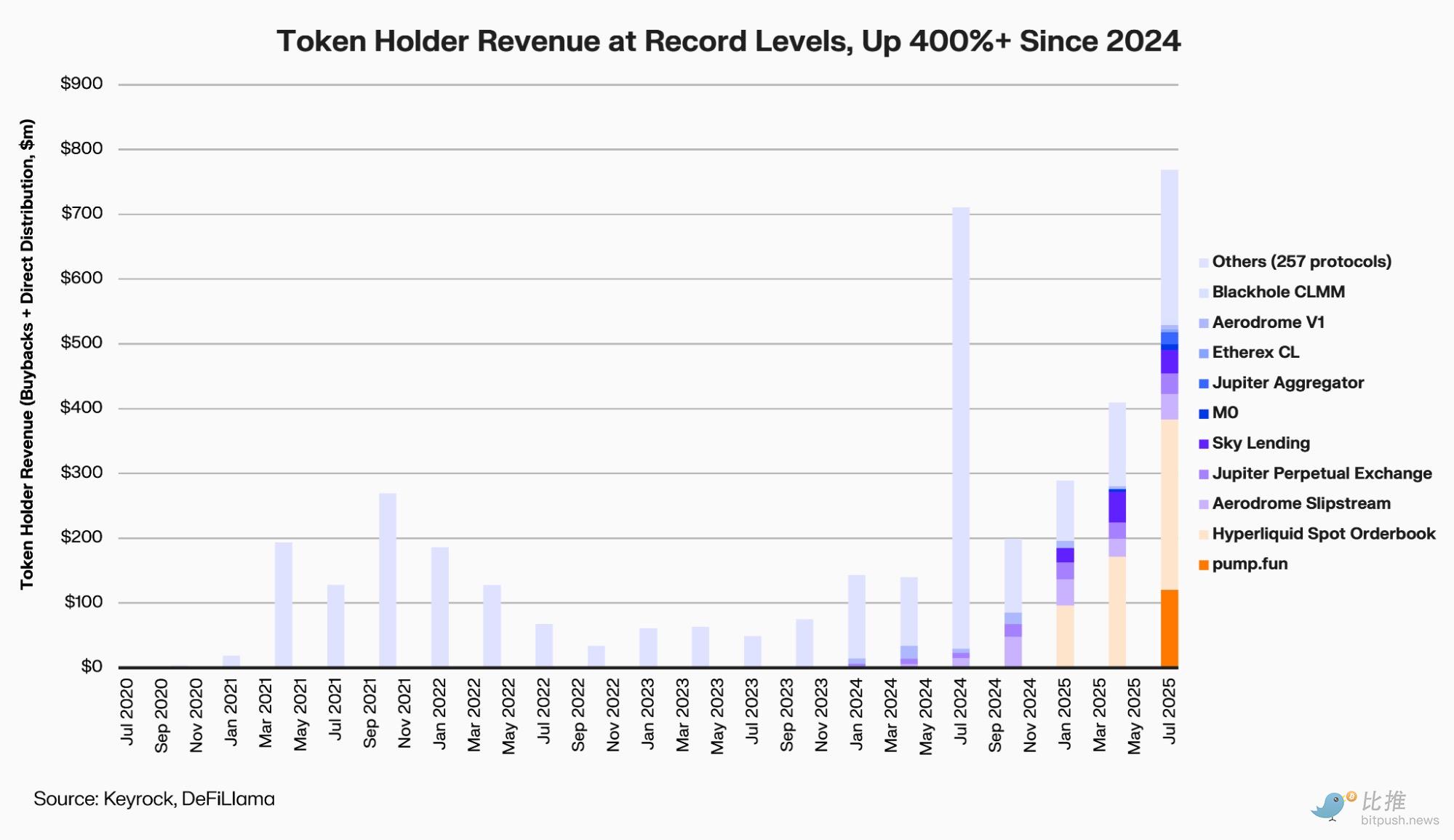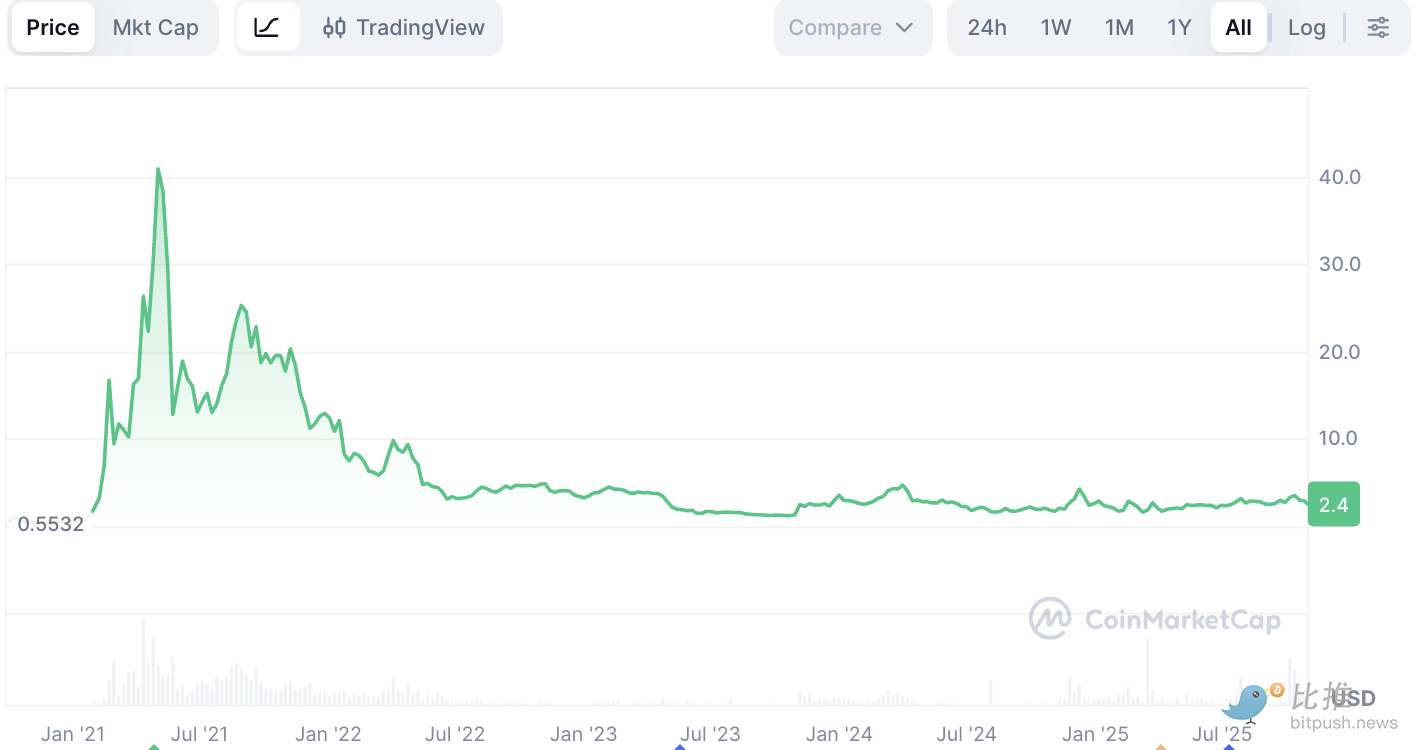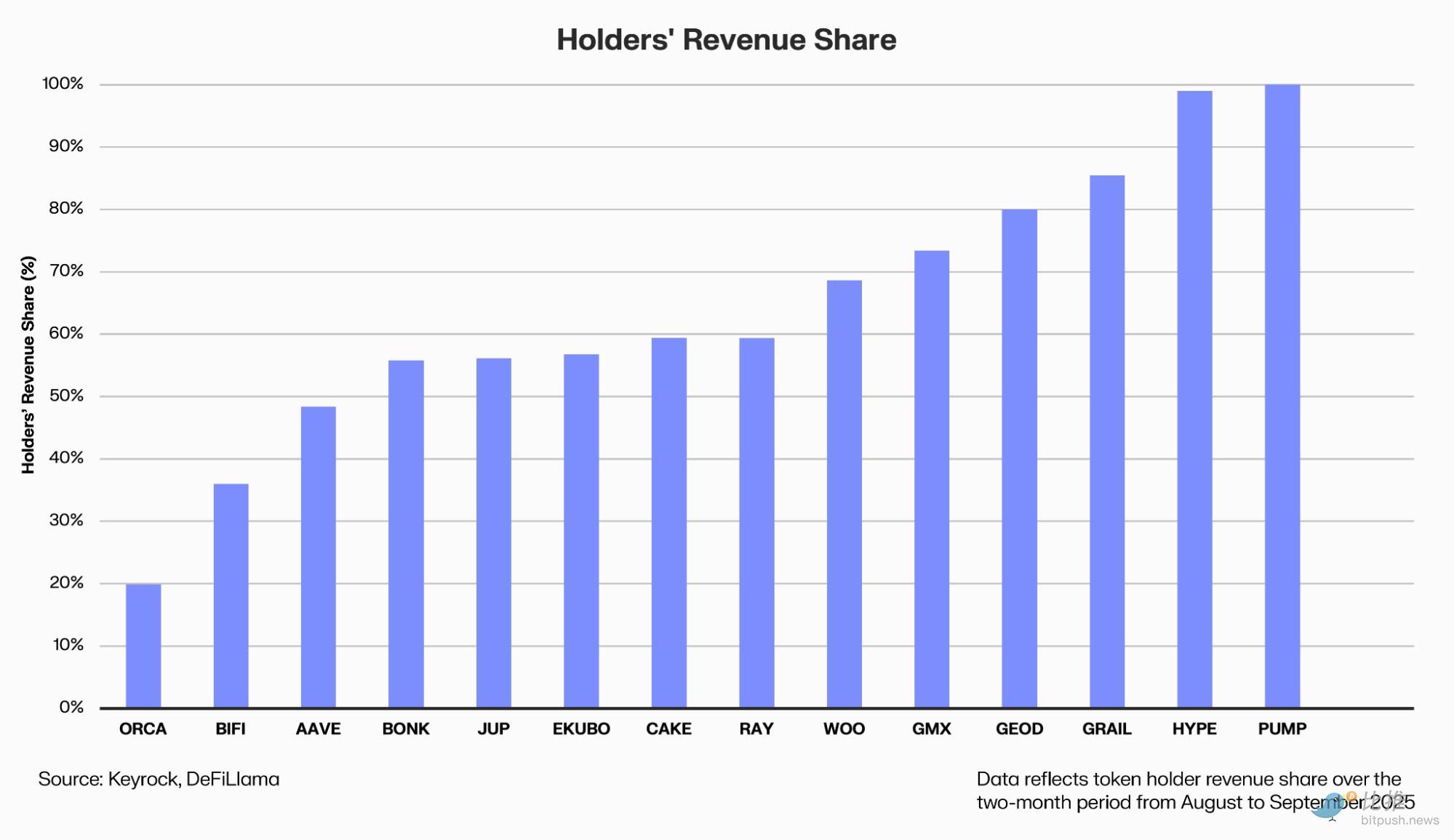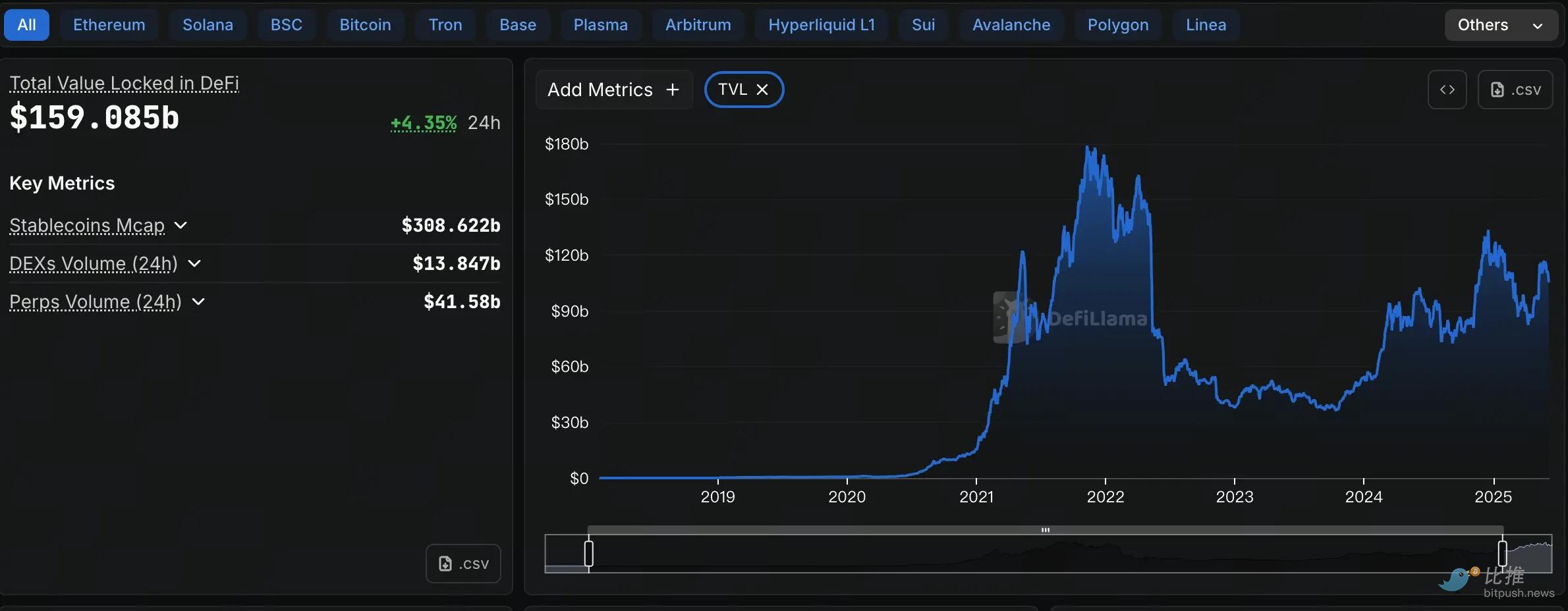Written by: OXStill
The year 2025 is not easy for DeFi project teams, but they have indeed learned a trick from Wall Street: using buybacks to express confidence.
According to a report by crypto market maker Keyrock, the top 12 DeFi protocols spent about $800 million on buybacks and dividends in 2025, a 400% increase from early 2024.
Report analyst Amir Hajian wrote: "Just as publicly listed companies use buybacks to convey long-term commitment, DeFi teams also hope to prove that they are profitable, have cash flow, and have a future."

However, in a market with scarce liquidity and low risk appetite, are these "returns to token holders" actions a return to value or just a waste of money?
Who is involved in the buyback wave?
This round of buyback wave has continued from early Aave and MakerDAO to later PancakeSwap, Synthetix, Hyperliquid, and Ether.fi—covering almost all major tracks in DeFi.
Aave (AAVE) is one of the early projects to initiate systematic buybacks. Since April 2025, Aave DAO has been using protocol revenue to buy back about $1 million AAVE weekly, and in October discussed normalizing the mechanism with an annual budget of up to $50 million.
On the day the proposal was approved, AAVE briefly rose by 13%, but after six months of pilot testing, the book profit was negative.

MakerDAO (MKR) launched the Smart Burn Engine in 2023, using DAI surpluses to regularly buy back and burn MKR. In the first week after the mechanism went live, MKR rebounded by 28%, hailed as a model of "cash flow returning to token holders."
However, a year later, the market presents a paradox of "confidence restoration, valuation lag."
Despite strong fundamentals (MakerDAO continuously increases DAI reserve income through real-world assets RWA), the MKR price (around $1,800 as of the end of October 2025) is still only one-third of its historical high during the 2021 bull market (around $6,292).
Ethereum liquidity staking protocol Ether.fi (ETHFI) recently proposed a plan that is undoubtedly the most attention-grabbing "big move." The DAO authorized up to $50 million to buy back ETHFI in batches below $3, using Snapshot for quick voting, aiming to "stabilize the coin price and restore confidence."
However, the market is also cautious: if the funds mainly come from treasury reserves rather than sustainable income, this "market protection buyback" will ultimately struggle to maintain momentum.
PancakeSwap (CAKE) chose the most programmatic path. Its "Buyback & Burn" mechanism has been integrated into the token model, disclosing net inflation data monthly. In April 2025, CAKE's net supply decreased by 0.61%, entering a state of continuous deflation.
However, the price still hovers just above $2, far below the $44 high in 2021—the supply improvement has brought stability, not a premium.

Synthetix (SNX) and GMX are also buying back and burning tokens using protocol fees.
Synthetix incorporated a buyback module in its 2024 version update, while GMX automatically allocates a portion of trading fees to the buyback pool. Both achieved rebounds of 30% to 40% during the buyback peak in 2024, but when stablecoin pegs were pressured and fees declined, they both paused buybacks and redirected funds to risk preparation.
The true "exceptional winner" is the perpetual contract platform Hyperliquid (HYPE).

It treats buybacks as part of its business narrative: a portion of protocol revenue automatically enters the secondary market buyback pool.
Dune data shows that Hyperliquid has invested a total of $645 million over the past year, accounting for 46% of the entire industry, and its HYPE token has risen 500% since its issuance in November 2024.
However, HYPE's success relies not only on buybacks but also on revenue and user growth—daily trading volume has tripled over the year.
Why Buybacks Often "Fail"
From the perspective of traditional financial logic, buybacks are highly sought after for three main reasons:
First, they promise to enhance value per share. When a protocol uses real money to buy back and burn tokens, a reduction in circulation means each token will enjoy a higher claim on future earnings.
Second, they convey governance confidence. Willingness to initiate buybacks indicates that the protocol has profitability, financial leeway, and governance efficiency. This is seen as an important sign of DeFi's shift from "burning money for subsidies" to "operational dividends."
Third, they shape scarcity expectations. If combined with mechanisms like locking and reducing supply, buybacks can create a deflationary effect on the supply side, optimizing the token economic model.
However, theoretical perfection does not equate to practical feasibility.
One issue is that timing often backfires. Most DAOs are generous in bull markets but cut funding in bear markets, creating an awkward situation of "buying high, watching low," which contradicts the original intention of value investing.
Funding sources also often raise concerns. Many projects use treasury reserves rather than sustainable profits; once income declines, buybacks become an unsustainable "putting on a brave face."
Another issue is opportunity cost. Every dollar used for buybacks means one less dollar invested in product iteration and ecosystem development. Market maker Keyrock issued a warning in October: "Excessive buybacks may be one of the least efficient ways of capital allocation."
Even when buybacks are executed, their effects can easily be diluted by ongoing unlocks and new token issuances. When supply-side pressure does not ease, limited buybacks are like a drop in the bucket.
Messari researcher Sunny Shi pointed out:
"We have not found that the market continuously raises valuations due to buybacks; prices are still determined by growth and narrative."

Additionally, the macro liquidity structure of the entire DeFi market has changed. Although the total locked value (TVL) has rebounded strongly to a three-year high (around $160 billion), there is still a gap compared to the historical peak during the 2021 bull market (around $180 billion). More importantly, while protocol revenue and capital utilization are high, the speed of secondary market trading volume and speculative hot money inflow still needs time to fully return to the previous cycle's "exuberance."
In a tight funding environment, even the most generous buybacks cannot offset the structural issue of insufficient demand. Confidence can be bought back for a moment, but only real capital inflows and growth cycles can allow DeFi to "self-generate" again.
免责声明:本文章仅代表作者个人观点,不代表本平台的立场和观点。本文章仅供信息分享,不构成对任何人的任何投资建议。用户与作者之间的任何争议,与本平台无关。如网页中刊载的文章或图片涉及侵权,请提供相关的权利证明和身份证明发送邮件到support@aicoin.com,本平台相关工作人员将会进行核查。



